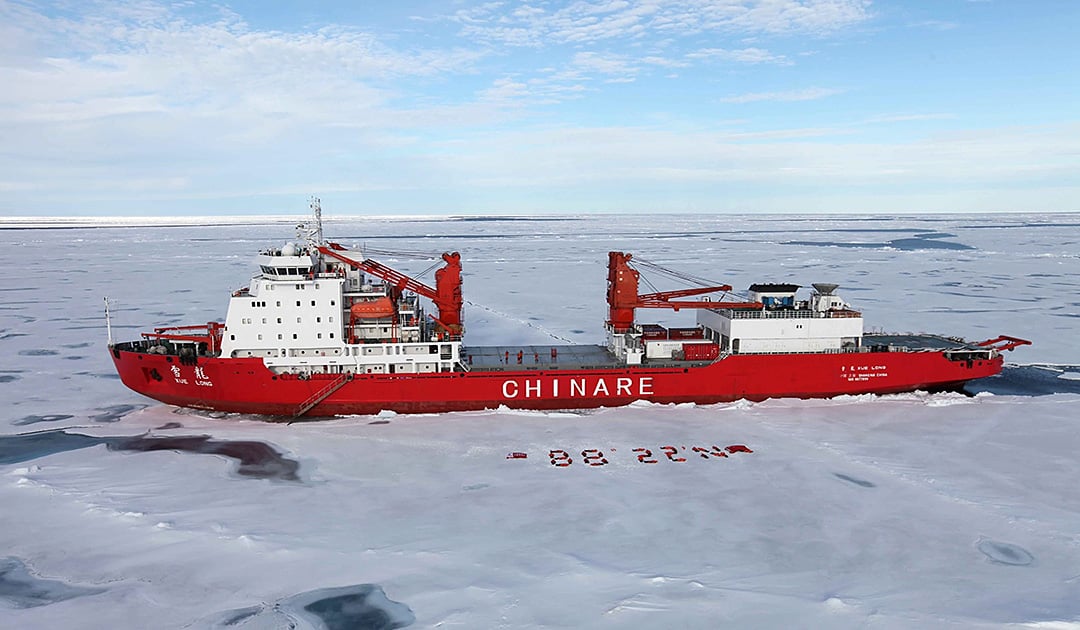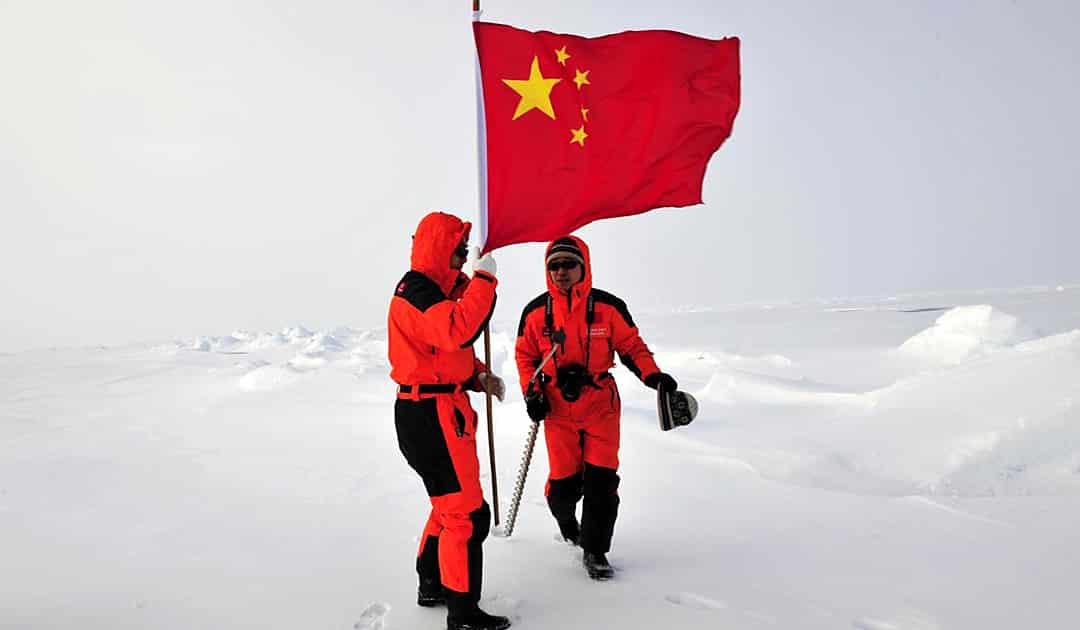
The People’s Congress in Beijing, the largest parliament in the world, formally decided on March 5, 2021 to participate in the construction of a “Polar Silk Road”. This was quoted by the state news agency Xinhua. China has made its intention to expand in the Arctic clear several times before.

China is pushing for the development of the “Polar Silk Road” in the Arctic Ocean. “China will build, or at least participate in, a “Polar Silk Road” and take an active part in the development of the Arctic and Antarctic regions,” the new “Five-Year Plan” for 2021-2025, released on Friday, said.
The much-discussed Northeast Passage is the Arctic shipping route that runs from the Atlantic to the Pacific and is much shorter than routes through the Suez Canal or around Africa. Melting sea ice means that it is increasingly seen as the next major shipping route over the next decade. Nevertheless, the link will not be navigable without Russian support, if only for security and safety reasons.
Back in 2018, China published a policy paper highlighting its plans to create new cargo routes between Asia and Europe via the Northeast Passages and raising concerns about the fragile environment in the region.
Late last year, China also announced plans to launch a new satellite to track shipping routes and monitor sea ice changes in the Arctic. The satellite is scheduled for launch in 2022.

China has been steadily increasing its presence in the Arctic since it defined the far north as a “new strategic frontier” in 2015 and began promoting a “Polar Silk Road” three years later. Moreover, in 2018, Beijing declared itself a “Near Arctic State,” a move that primarily served to underscore the interests of its Arctic claim.
The government in Beijing has its eye on lucrative minerals and other raw materials in addition to the Arctic transport link. There is particular interest in interests in the Canadian Arctic and in mining rights in Greenland. This is because the Arctic is rich in natural resources such as fish, precious metals and fossil fuels.
China has also shown great interest in infrastructure in the Arctic in recent years. Among other things, the Chinese Polar Institute recently had tried to buy or at least rent an airfield in Kemijärvi, a town in Finnish Lapland, according to the portal The Independent Barents Observer. However, this was rejected by the Finnish Ministry of Defence. And in Norway, the state broadcasting agency NRK had reported a few months ago that China might have an interest in Hurtigruten. China has also expressed interest in infrastructure projects in Russia.
Heiner Kubny, PolarJournal
More on the subject:





